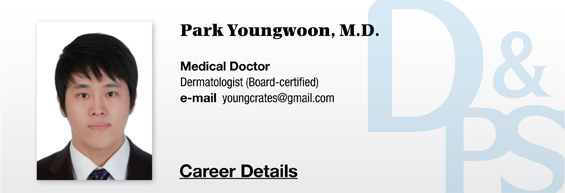In our previous article ‘Mottled hypopigmentation from Laser toning in the treatment of melasma: a catastrophic or manageable complication?’, we performed a systematic literature review of publications reporting the development of hypopigmentation after Laser toning.6
Some reports focused on the occurrence of hypopigmentation following Laser toning treatments, with an estimated incidence of around 10% in the Asian population. This led to a growing concern about the risk of Laser toning.9-13
However, most of the reported cases were collected during the early days of Laser toning when more aggressive approach was used with a high fluence, excessive cumulative energy, a high number of passes and short treatment intervals. Recent Laser toning treatment uses a lower fluence and fewer passes that cause milder tissue responses compared to the old days and the treatment interval is adjusted depending on the patient responses. Such modifications have helped to greatly reduce the incidence of mottled hypopigmentation, skin irritation, PIH and rebound hyperpigmentation.
In the previous article, we concluded that excessive concern and fear of Laser toning are unwarranted.6 Meanwhile, one may still wonder about the impact of using gentle parameters on the efficacy. In this article, we will discuss limitations of the current Laser toning techniques and suggest various ways to overcome these limitations through literature review and our own clinical experience.
The therapeutic efficacy of Laser toning in melasma can be considered in two aspects; the degree of initial improvement from treatment, and how long this improvement is maintained without recurrence.
The recent approach of Laser toning with gentle parameters is superior to the more aggressive method in terms of the latter aspect of efficacy; maintaining the improvement without recurrence. The gentle approach with a lower fluence carries a much lower risk of complications including PIH or hypopigmentation, and causes less rebound hyperpigmentation or recurrence. Many studies already found that the initial therapeutic effect of the gentle approach was maintained for a longer period of time compared to the more aggressive method.14-16
Experienced doctors agree that using high fluences, many passes, and shorter intervals to achieve quick results can cause quicker and more common recurrences of melasma.
When it comes to the other aspect of efficacy, the degree of initial improvement from treatment, the recent Laser toning method with gentle parameters may seem to fall short. The non-responder rate has not yet been shown to be higher with a gentle approach compared to the more aggressive one.
However, many dermatologists who have switched to the gentle parameters more frequently experience patients showing poor initial improvement to Laser toning. They sometimes complain that they are seeing a growing number of non-responders.
While it is true that clinical dermatologists encounter considerable number of non-responders and it may be an annoying problem to practitioners, there is a paucity of clinical studies that systematically analyzed or reviewed this phenomenon. It seems impossible to systematically assess and analyze the non-responder rate associated with Laser parameters and other diverse treatment techniques.
What is worse, the term “non-responder” is not yet clearly defined. However, it generally refers to patients with less than 25% clinical improvement after 7-15 Laser toning treatments.12,17 We also use this definition in this article.
Generally, studies mentioning the non-responder reported a rate around 10% of non-responders in melasma patients treated by Laser toning; 2 out of 25,12 and 4 out of 50.17 These studies used relatively aggressive parameters with the fluence of 2.5-5 J/cm2 and 2.8 J/cm2, respectively.
HELIOSⅡ/LOTUSⅡ/HYPERION – Manufacturer: LASEROPTEK(www.laseroptek.com)
References
9. Chan NP, Ho SG, Shek SY, Yeung CK, Chan HH. A case series of facial depigmentation associated with low fluence Q-switched 1,064 nm Nd:YAG Laser for skin rejuvenation and melasma. Lasers Surg Med 2010;42:712-9.
10. Polnikorn N. Treatment of refractory dermal melasma with the MedLite C6 Q-switched Nd:YAG Laser: two case reports. J Cosmet Laser Ther 2008;10:167-73.
11. Wattanakrai P, Mornchan R, Eimpunth S. Low-fluence Q-switched neodymium-doped yttrium aluminum garnet (1,064 nm) Laser for the treatment of facial melasma in Asians. Dermatol Surg 2010;36:76-87.
12. Cho SB, Kim JS, Kim MJ. Melasma treatment in Korean women using a 1064-nm Q-switched Nd:YAG Laser with low pulse energy. Clin Exp Dermatol 2009;34:e847-50.
13. Kim MJ, Kim JS, Cho SB. Punctate leucoderma after melasma treatment using 1064-nm Q-switched Nd:YAG Laser with low pulse energy. J Eur Acad Dermatol Venereol 2009;23:960-2.
14. Kauvar AN. The evolution of melasma therapy: targeting melanosomes using low-fluence Q-switched neodymium-doped yttrium aluminium garnet Lasers. Semin Cutan Med Surg 2012;31:126-32.
15. Kim HS, Kim EK, Jung KE, Park YM, Kim HO, Lee JY. A split-face comparison of low-fluence Q-switched Nd: YAG Laser plus 1550 nm fractional photothermolysis vs. Q-switched Nd: YAG monotherapy for facial melasma in Asian skin. J Cosmet Laser Ther 2013;15:143-9.
16. Lee DB, Suh HS, Choi YS. A comparative study of low-fluence 1064-nm Q-switched Nd:YAG Laser with or without chemical peeling using Jessner's solution in melasma patients. J Dermatolog Treat 2014;25:523-8.
17. Sim JH, Park YL, Lee JS, Lee SY, Choi WB, Kim HJ, et al. Treatment of melasma by low-fluence 1064 nm Q-switched Nd:YAG Laser. J Dermatolog Treat 2014;25:212-7.
-To be continued






















